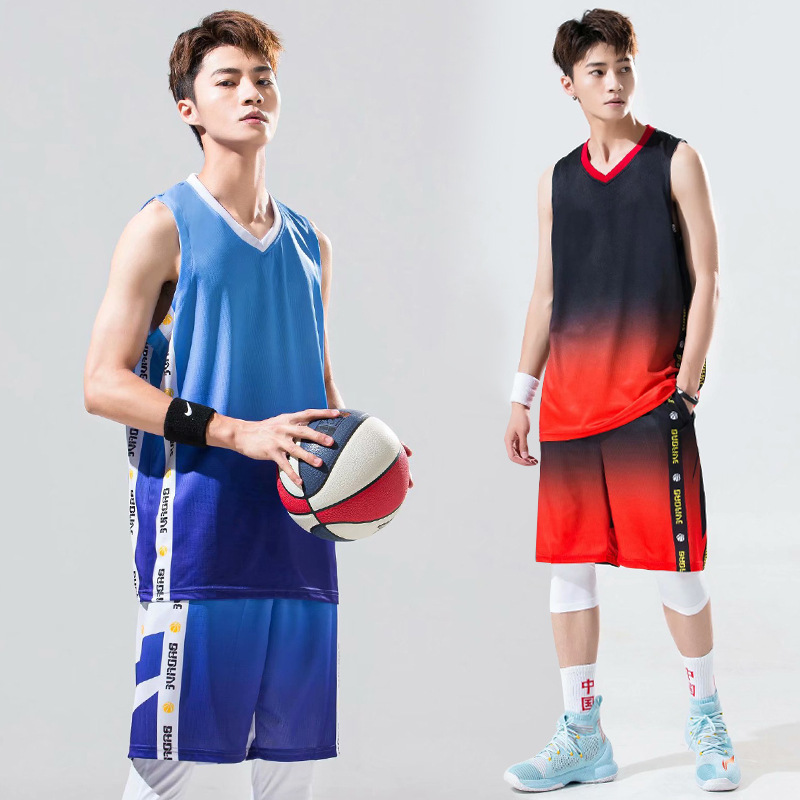There are many kinds of sports nowadays, which results in many kinds of sportswear. The following is an introduction to the classification of sportswear:
Track suit
Athletes mainly wear vests and shorts. Vests are generally required to be fit and shorts are easy to step on. Sometimes, in order not to affect the movement of the athletes’ wide-span legs, the sides of the trousers are slit or a certain degree of looseness is released. Vests and shorts are mostly knitted fabrics, but also made of silk.
Ball sportswear
Usually shorts are matched with a toe top. A certain amount of looseness is required for ball sportswear. Basketball players generally wear vests, while other ball players often wear short-sleeved tops. Football sportswear is customarily used with a V-neck, while volleyball, table tennis, rugby, badminton, tennis and other sportswear are equipped with collars, and blue and red stripes are added to the outside of the sleeves and trousers. Tennis shirts are mainly white, while women wear short dresses.
Water sportswear
①When engaged in swimming, diving, water polo, water skiing, surfing, snorkeling and other sports, mainly wear tight swimming suits, also known as swimwear. Men wear triangle shorts and women wear jumpsuits or bikinis. The basic requirement for swimming suits is that athletes do not swell in the water and reduce the resistance in the water. Therefore, it is appropriate to use high-density, good elasticity, and smooth cloth surface elastic, nylon, acrylic and other chemical fiber knitted fabrics. Wear plastic and rubber tight-fitting hood swimming caps. In addition to wearing swimsuits, snorkelers generally wear masks, diving glasses, snorkels, and fins.
②When engaged in rowing sports, mainly wear shorts and vests to facilitate paddle rowing. In winter, a wool knitted top with sleeves is used.
③The speed of motorboats is fast. In addition to ordinary knitted sportswear, athletes often wear porous rubber suits with good permeability, rubberized raincoats and airbag life jackets. The color of the clothes should be red and yellow, which contrast sharply with the seawater, so that they can be easily spotted in the event of an accident. Lightweight racing boats are anti-overturning. Athletes also need to wear a good absorbent wool vest, which weighs about 3kg after absorbing water.
Weightlifting suit
In weightlifting competitions, athletes often wear thick and sturdy tight-fitting knitted vests or short-sleeved tops, with shorts with suspenders and a wide waist belt. The belt width should not exceed 12cm.
Wrestling suit
The wrestling suit differs depending on the wrestling event. For example, Mongolian wrestling wears a leather sleeveless short jacket, also known as a “puff”. It is not tied, with a waistband, trousers, or with knee pads. Judo and karate wear traditional Chinese white slanted shirts, under the knee-length trousers, and a belt. Japan and other countries also distinguish judo ranks by the color of the belt. Sumo is accustomed to being naked, with only a narrow cloth crotch and waist belt tied under the crotch.
Gym suit
Gymnastics suits must show the beauty of the human body and its movements on the premise of ensuring that the athletes can perform freely. Men generally wear white trousers with a vest, the front folds of the trousers are straight, and elastic bands are installed at the mouth of the trousers, and they can also wear stockings. Women wear knitted tights or stockings, and are made of fabrics with good elasticity, bright colors and luster.
Ice sportswear
Sportswear for skating and skiing requires warmth and fits as closely as possible to reduce air resistance and is suitable for fast sports. Generally, thicker wool or other blended wool fiber knitted clothing is used, and a knitted hood is worn on the head. Figure skating and other competitions pay more attention to the style and color of sportswear. Men usually wear tight, chic and simple dresses; women wear ultra-short dresses and stockings.
Mountaineering clothes
Competitive mountaineering generally uses soft and wear-resistant woolen tights, elastic bands on the cuffs and trousers, and rubber-soled rock shoes with convex teeth. For expedition mountaineering, you need to wear down jackets with good thermal insulation properties, and be equipped with down caps, socks, gloves, etc. The clothes are made of bright red, blue and other dark colors, which are easy to absorb heat and be recognized in ice and snow. In addition, for expedition mountaineering, you can also wear a hooded snow jacket made of acrylic fiber. The cap, cuffs and trousers can be adjusted tightly to waterproof, windproof, warm and protect the inner layer of clothing.
Fencing suit
The fencing suit first focuses on body protection, and secondly needs to be light. It is composed of white fencing jacket, face protection, gloves, trousers, stockings and shoes. The coat is generally made of thick cotton pads, leather, hard plastic and metal to protect the shoulders, chest, back, abdomen and right side of the body. According to different sword types such as foil, saber, and epee, the requirements for the protective layer of sportswear are slightly different. The outer layer of the foil competition jacket is wound with metal wire and energized. Once it is stabbed by the sword, the electric referee will light up; the inner layer is insulated with nylon fabric to prevent sweating and conduction; the protective surface is a mask type, with high Made of high-strength wire mesh, the two ear cushions are soft padded; the bottom pants are generally a few centimeters below the knee, and then put on long stockings without the trousers. The fencing suit should be as small as possible to reduce the chance of being hit.
 Track suit
Track suit
 Fencing suit
Fencing suit
 Ball sportswear
Ball sportswear
 Water sportswear
Water sportswear
 Wrestling suit
Wrestling suit
